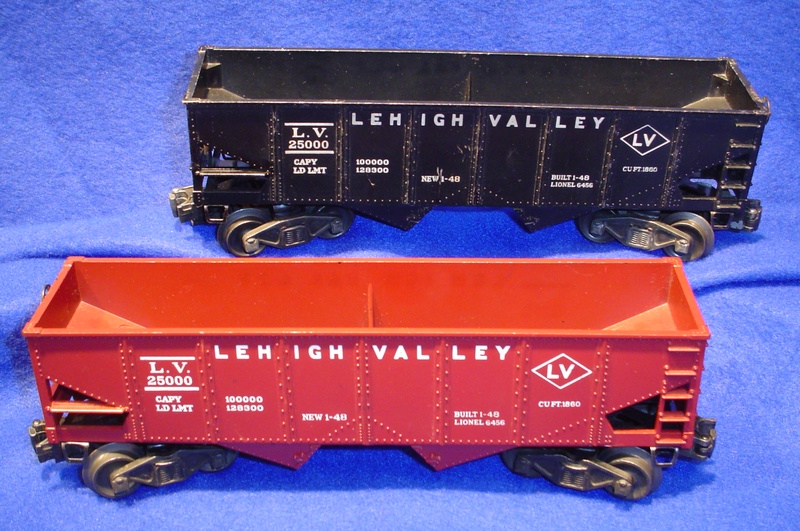Lionel pw-1100117
HOPPERS

| "Coal Car" was the term more widely used by the general public for the cars that the railroads designated as hopper carsIn either case, this type of car had doors in the bottom of the car which when opened allowed the coal or other load to fall out, unloading the car by gravityIn the winter, railroads had heating facilites to heat the coal cars and unfreeze the coal so it would unloadSome railroads, including the Lackawanna's Hoboken facility, had mechanism which rotated the entire car upside down for even faster unloadingSolid coal trains of 100 or more cars were common up until the days that oil and gas replaced coal as the main fuel for household heatingOn the Lackawanna Boonton Line, which was 4 tracks wide) the center two tracks were devoted to the'coal drags' which were long trains (sometimes exceeding 100 cars) with nothing both coal cars running from Scranton to NYC and HobokenEastbound trains were loaded with coal, cars on the westbound trains were empty being returned to the minesThe coal drags were usually headed by Mikados, and they typically traveled at about 20 miles pe hour in each direction, with sometime 3 or 4 per hour going throughThe two outside tracks were resrved for the hourly (or more frequently) Boonton line passenger trains, and forthe high speed fast freight trains generally pulled by 4-8-4 Poconos at unbelievably high speedsOne could hear a steam engine at almost any time, day or night along that lineLionel produced hoppers in tow basic sizes, the shorted 8 9/16 inch size, and longer hopper, frequently with coverHugh quantites of hoppers were included in many sets produced from 1946 thru 1969One unique short hopper had operating doors on the bottom and was designed to work with the Lionel coal rampWhat fun it was (and still is) |

To Research Other Lionel Items in Our Research Library,
Click Your Browser's Back Button
Return to the Train-Station.com Home Page

|
![]()
![]()